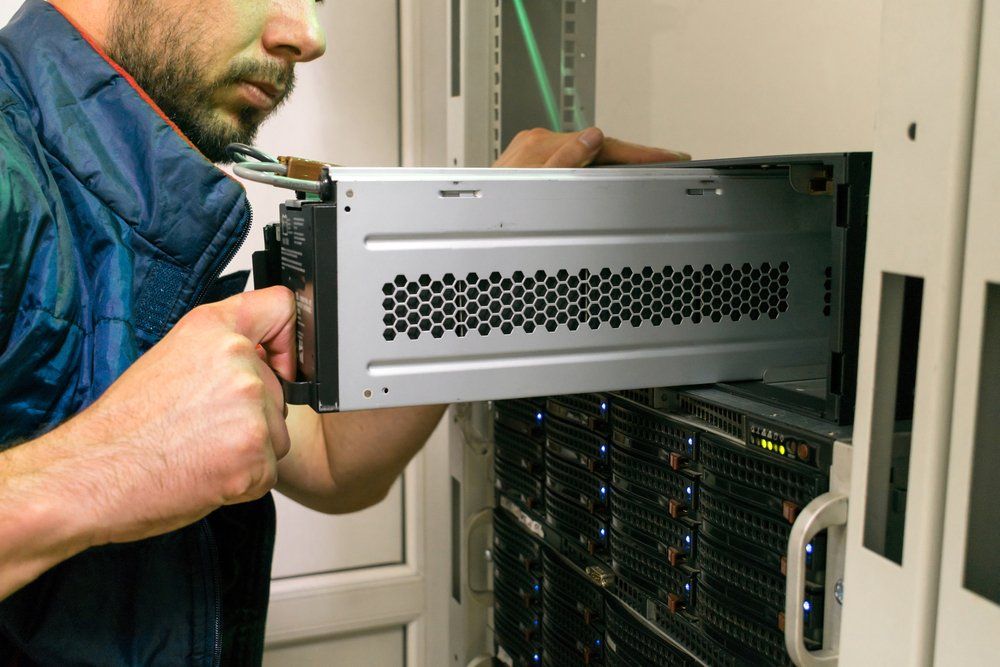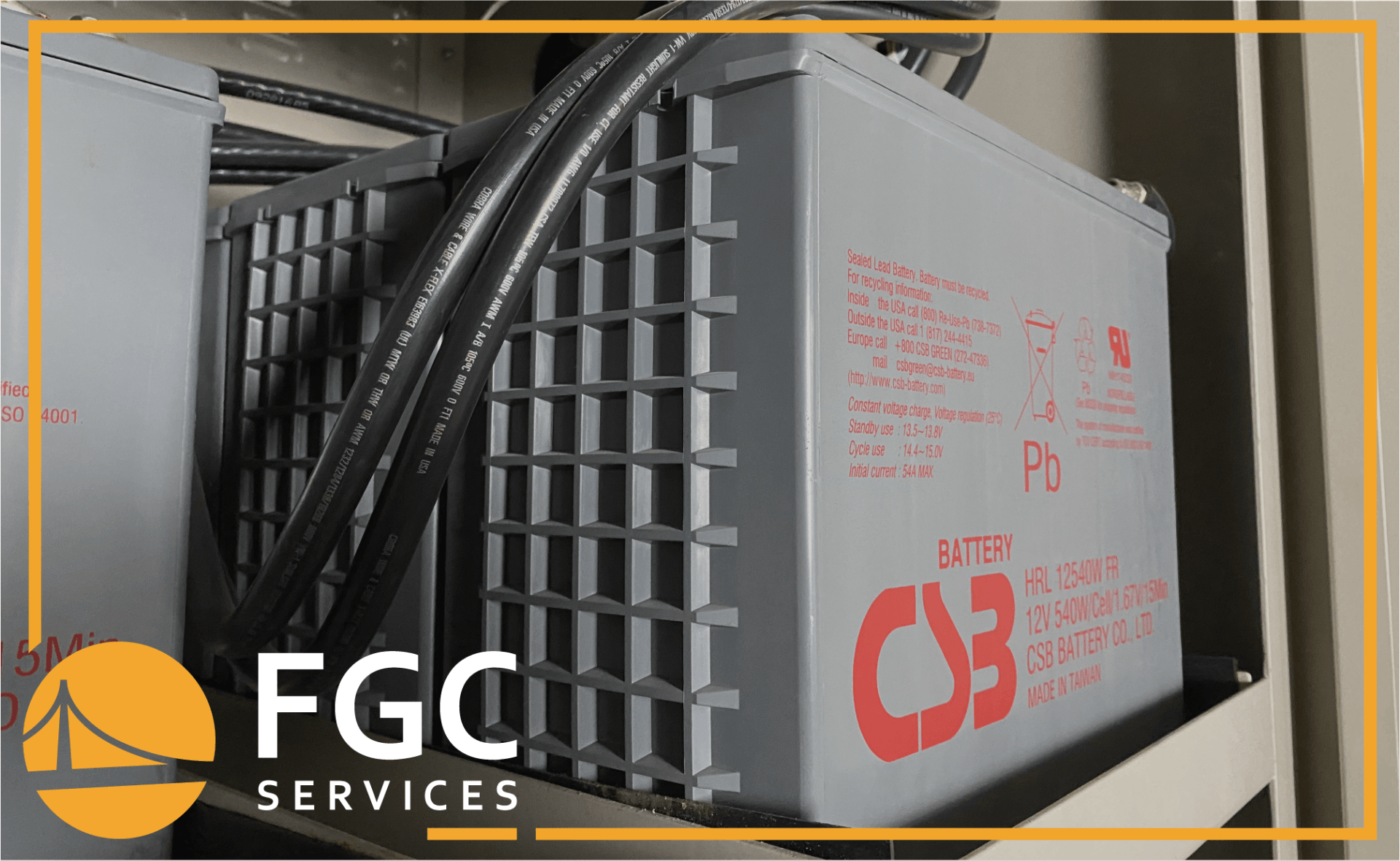Dry Battery vs Wet Battery: Which is Better for Uninterruptible Power Supply?
27 August 2021
Share this article:
Batteries are the most important part of your uninterruptible power supply. However, there are a lot of options to choose from, making this difficult decision even more challenging.
When determining which type of battery is best for your power needs, you'll want to consider the differences between wet-cell and dry-cell batteries. The most important difference between a wet-cell and dry-cell battery for uninterruptible power supplies (UPS) is in how they are maintained following installation.
What's the best battery option for you? Find out by reading this blog post about how they work, what the maintenance requirements there are, and a few of their pros and cons!

Wet-Cell Battery Overview
A wet-cell UPS battery uses a liquid electrolyte such as sulfuric acid to generate power. Typically, these batteries have a longer lifespan and can be discharged deeper than a dry-cell alternative. However, they do require more maintenance than dry-cell alternatives.
Below, we outline a few of the wet-cell battery's advantages.
Pros of Wet-Cell Batteries
Longer Lifespan: A wet-cell battery has a much longer life span than of dry cells, so it won't need to be replaced as often. They also don't contain lead-acid.
Deeper Discharges: The discharge rate is also more forgiving with a wet-cell battery, meaning that it can be discharged to 100% without damaging the cells.
Electrolyte Is Nonflammable: The electrolytes in wet-cell batteries are non-flammable and won't produce toxic gases when meeting water or air.
Dry-Cell Battery Overview
A dry-cell UPS battery stores its charge in an enclosed container and uses a special type of valve to regulate the flow of electricity to and from the battery. This design makes the dry-cell battery very safe to use and easy to maintain.
The downside is that these batteries are not as durable nor long-lasting, but they do have more charge cycles before they need replacement.
Pros of Dry-Cell Batteries
Operation in any position: Unlike wet-cell batteries, dry-cell batteries can be operated in any position, useful for a wide range of applications.
Efficient Power Creation: Dry-cell batteries also typically have great energy densities, packing a large amount of power into a small, efficient design. Dry-cell UPS batteries can be a good choice if you're looking for something small enough to fit in tight spaces with little weight.
Longer Storage: Dry-cell batteries are typically used as primary cells and therefore can handle long periods of storage. These maintain their charge for longer than secondary batteries which is why they're still used in UPS systems, even though lithium-ion, lead-acid, and nickel-cadmium are the more popular types of battery currently on the market.
Cost savings: Since the dry-cell batteries require less maintenance over time, they are a less expensive battery to maintain.
Dry vs Wet Battery for Uninterruptible Power Supply: Maintenance and Upkeep Differences
Dry-Cell Battery Maintenance
As one of the most durable battery options available, maintaining your dry-cell batteries is relatively easy and can be accomplished with a few simple, infrequent steps.
Keep the battery clean: Cleaning is essential to prolong dry-cell battery life. This can be done with a damp cloth or dry rag, and you should clean any dirt from around the terminals as well. Avoid using harsh chemicals or anything that might damage the plastic casing of your batteries as this will cause them to wear down more quickly than they would otherwise.
Keep battery temperature stable: Dry-cell batteries should be stored in a cool and dry environment. Most batteries should be kept at the recommended 15 degrees Celsius (or 59 degrees Fahrenheit). Be sure to avoid freezing temperatures and do not store these batteries near sources of heat. Dry-cell batteries are more susceptible to overheating than wet-cell options, so keep them away from closed windows on sunny days or any other source that might create high temperatures around the battery.
Do not short circuit your batteries: If you're handling a battery, it's important to avoid all contact between the terminals of the battery and other metal objects. Make sure that they are insulated from anything that may cause them to contact one another by using electrical tape or some type of insulation material on either side of the terminal.
PM (Preventative Maintenance) Frequency: Depending on the runtime configuration and the string size, we recommend conducting a battery PM visit during every UPS PM, 2 times annually. If this is a mission critical application, we recommend quarterly PMs. Make sure to get voltage and resistance reading for every individual jar during every PM. We recommend a Midtronics meter or something equivalent for proper reporting.
Wet-Cell Battery Maintenance
Wet-cell batteries require regular maintenance to function properly. This maintenance includes:
Periodic top-up of the electrolyte: You'll need to periodically add water and acid to maintain the optimum level for battery performance. Wet-cell or flooded batteries typically need their electrolyte levels checked at least once every three months.
Keep cables clean and dry: This is very important, as even a small amount of corrosion can cause your wet-cell batteries to malfunction or fail to provide power.
Check for leaks: Keep an eye out for any unusual signs of bubbles or gas. Gas is the first warning sign that your battery needs to be recharged and serviced.
PM Frequency: We recommend conducting a battery PM visit quarterly for wet-cell battery plants. If this is a mission critical application, we recommend monthly PMs. Make sure to get voltage and resistance reading for every individual jar during every PM. We recommend a Midtronics meter or something equivalent for proper reporting.
The wet-cell batteries should also have a thorough inspection at least once per year, preferably in spring before summer when temperatures are warmest.
FGC – Your Partner in Battery Maintenance
Facility Gateway Corporation offers a wide variety of replacement UPS batteries for all uninterruptable power systems. We understand the importance of proper maintenance and recycling, so we recommend replacing your dry-cell batteries every 3-5 years and your wet-cell batteries every 15-50 years, depending on the configuration and application to ensure maximum production time in between replacements.
You can learn more about the lifecycle of your UPS and its components by visiting our recent blog on the subject or speak with a member of our team!
Our Account Managers will work with your site contact to ship out any new battery order you need ASAP.
Connect with Us:





